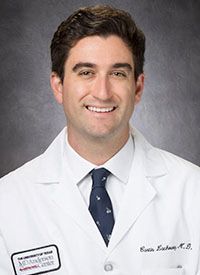Best Practices for Virtual Conference Presentations
As the autumn and winter conference season approaches, Curtis Lachowiez, MD, reflects on the impact 2020 left on the field of oncology.
Curtis Lachowiez, MD

As we move into the autumn and winter conference seasons, I reflect on the impact 2020 left on the field of oncology. The year will be remembered for losses; the vast numbers of lives lost during the COVID-19 pandemic must not go unacknowledged.
The changes we experienced during 2020 ranged from the mundane, such as difficulty obtaining common household pleasantries, to vast economic downturns and strained health care systems. The oncology community, too, was forced to adapt to a world where personal interactions were discouraged if not forbidden.
I had the great fortune to be selected as an oral presenter for the 2020 ASCO Annual Meeting, an event that transitioned to a completely virtual format for the first time in its 55-year history. I had to quickly became familiar with obscure names such as Zoom, Slack, Webex, Microsoft Teams, and GoToMeeting—names now woven into the daily vernacular of the world.
As a novice presenter, I was daunted by the prospect of a virtual oral presentation. On the other hand, it was opportunity for learning and growth. A subsequent oral presentation at the 63rd ASH Annual Meeting & Exposition in December would surely test my newly acquired virtual presentation skill set and enable me to consolidate what I had learned.
The first challenge I faced when presenting through a virtual platform was keeping the audience engaged. A speaker can hold the typical adult learner’s attention for only 15 to 20 minutes. The 10- to 12-minute presentation time limit imposed by conference organizers, but I couldn’t depend on the clock to save me.
The task then became how best to capture the audience through the screen in front of them rather than within a filled lecture hall. It was necessary to maintain strict attention to detail on the slide deck—aesthetics and judicious use of space had never been more important.
Some resounding core presentation components remained true: Use large fonts, present the most important points in bulleted lists, use discussion rather than writing in all prose, and present data in large graphs and tables. In this new format, there was no opportunity to explain away typos or errors and no opportunity for live questions or discussion with peers following the presentation. I made sure my slides were accurate and engaging thanks to insightful and sharp review of the presentation by colleagues. Their critical feedback helped me address any flaws in my delivery. The final presentation was the result of numerous revisions distilled to a finished product that required close teamwork with my mentors and collaborators.
Sharing the study findings in the allotted time was the second challenge. While the time limits were reasonable, the phrase “choose your words carefully” took on new meaning. No longer did the speaker control the podium. Rather, a prerecorded presentation was carefully uploaded into the prespecified virtual meeting time slot. As a presenter, I didn’t have the luxury of additional time—each second was valuable, and I couldn’t waste time on fumbles and filler words. There was no ability to steal additional time at the end of the presentation or address follow-up questions that would allow me to explain anything that was unclear during the presentation.
The key to clearing this hurdle was practice, practice, practice. I rehearsed the presentation again and again to refine the content and make sure my data could be understood in the time allotted.
The ability to prerecord the presentation created its own obstacles. Given the value of allotted time, I often had to rerecord the presentation when a sentence was not articulated to my self-inflicted standards or I accidentally dropped in an extraneous “um.”
Filming from home added to the complexity. I don’t have a recording studio at home that would ensure lighting and sound were suited for recording a presentation to be delivered at an international meeting with a vast audience (ASCO reported recordbreaking attendance for its 2020 conference, with more than 40,000 participants from 138 countries).
Additionally, I knew that the presentation was a representation of my eff orts and the department and institution, as well as the patients and families enrolled in the clinical studies. The pressure to aim for perfection felt overwhelming. After multiple retakes, I finally realized that perfection is only an aspiration and to err is human. That helped me remain focused and on task, and that resulted in a successful recording.
The COVID-19 pandemic reshaped work life and home life as we knew it. It is also apparent that a virus is no match for human ingenuity and resilience. Virtual presentations imparted new challenges in the ongoing pursuit of sharing medical knowledge to advance cancer care during a global pandemic.
Moving forward, it remains unknown if virtual presentations will become a permanent feature of medical education. However, the challenges of virtual presentations left me with valuable lessons irrespective of the platform:
- First, paying close attention to detail allows the delivery of a rich and engaging visual presentation.
- Second, obtaining critical feedback on the presentations from colleagues improves the quality of content shared with the audience.
- Third, rehearsing the presentation beforehand allows for smooth transitions and eliminating filler words enables sharp delivery of meaningful context.
- Fourth, creating a professional appearance and surrounding environment are vital and easily overlooked important components of the presentation.
Always remember the goal of presenting: to captivate the audience while conveying a message. Finally, embrace excellence— not perfection.




